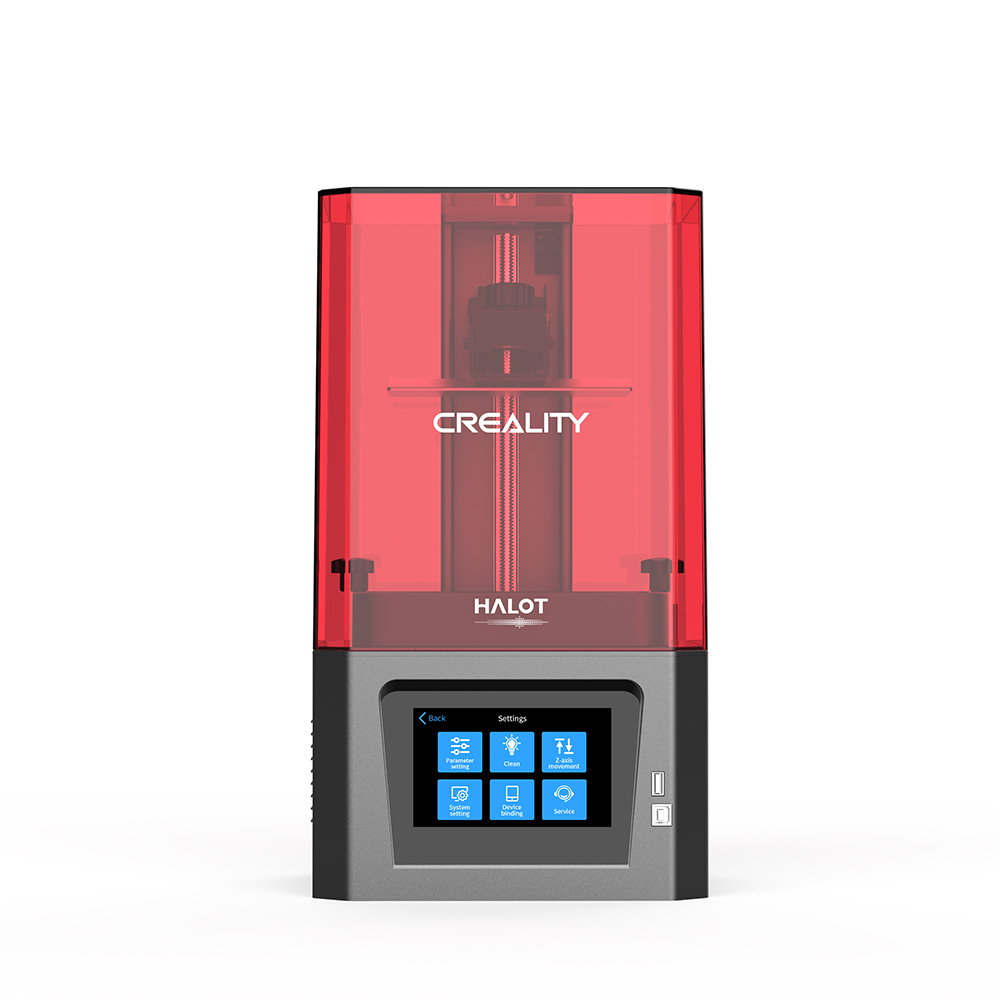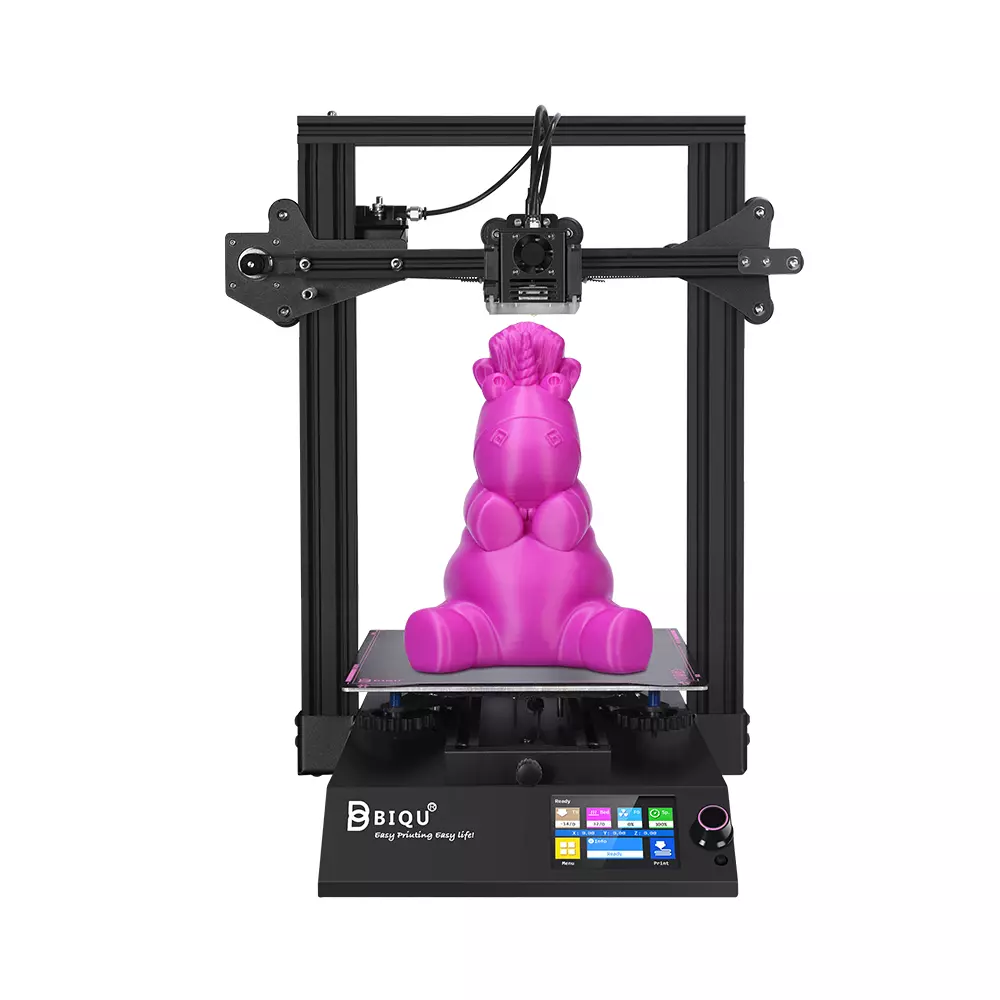Compare Halot One vs BIQU B1
Comparison between the best 3D printers
Choose the best 3D printer at the best price. The cheapest 3D printers are here.
Buy a 3D printer here with 3D Fila.
 |
 |
|
| Model | Halot One |
BIQU B1 |
| Printing Material | Resin | Filament |
| Buy Resin for Creality 3D Halot One | Buy Filament forBigTreeTech BIQU B1 | |
| Estimated price | $250,00 | $269,00 |
| Manufacturer | Creality 3D | BigTreeTech |
| Release Year | 2021 | 2020 |
| Print Volume [mm] | 127x80x160 | 235x235x270 |
| Printer Size [mm] | 221x221x404 | 412x402x492 |
| Weight [kg] | 7,1 | 8,00 |
| Power Loss Recovery | NO | YES |
| Maximum Resolution [mm] | 2k | 0,1 |
| Processor | 32 Bits BTT SKR V 1.4 | |
| Display | Touchscreen TFT 3,5'' | |
| Power Supply | 24V / 360W | |
| Connectivity | SD / USB | |
| Operating systems | Windows, Mac, Linux | Windows, Mac, Linux |
| Date of registration in the system | 2022-10-11 | 2021-04-14 |
| Release date | 2021 | 2020 |
| Extra features | Crealitys Halot-One printer stands out with several innovative features. It has a high-resolution touchscreen, providing an intuitive and responsive interface. Its quiet printing capability is remarkable, ideal for environments where noise is a concern. Assembly and setup are simple, with automatic functions facilitating quick start. Among its features, remote monitoring and adjustments via the Creality Cloud app stand out, simplifying remote print management. Replacing the FEP in the resin vat is easy, and the printer even includes extra FEP sheets. Top cover removal detection increases safety by automatically pausing printing. In addition, its integral light source promises high uniformity, optimizing print quality. | The BIQU B1 is an advanced 3D printer with a silent 32-bit BTT SKR V1.4 motherboard and ARM Cortex-M3 CPU, offering DIY interfaces (I2C, SPI, WiFi) and dual Z-axis. Its dual BTT B1 TFT35 V3.0 operating system allows real-time monitoring and multiple printing modes, including G-code visualization effects. It stands out for its BIQU SSS (Super Spring Steel), ensuring easy model adhesion and simplified removal, with the possibility of using it on both sides. It includes a filament sensor, automatically pausing printing in case of filament breakage. The multicolored RGB lights integrated into the hotend allow you to view the printing status even at night. Additional notes include the need for a BIQU-specific Type-C cable and extra interfaces for smart filament sensor and BL Touch. |
| Support for multiple colors and materials (AMS and CFS) | NO | NO |
Notes * |
||
| Cost-benefit | 8 / 10 | 7 / 10 |
| Hardware | 0.6 / 10 | 2 / 10 |
| Tela | . | . |
| Print volume | 3 / 10 | 3 / 10 |
| Performance | 9 / 10 | 1 / 10 |
Conclusion |
| In comparing the Halot One and BIQU B1 3D printers, several factors reveal notable distinctions that can guide potential buyers in making an informed decision. The Halot One, priced slightly lower, presents an intriguing combination of advanced features, ease of use, and print quality. Its high-resolution touchscreen, quiet operation, remote monitoring capabilities, and efficient setup make it an appealing choice for both beginners and seasoned users. The emphasis on safety and print quality, coupled with a reasonable cost-benefit ratio, enhances its value proposition. On the other hand, the BIQU B1, while having a slightly higher price, offers commendable hardware specifications such as a dual Z-axis and real-time monitoring. It’s particularly suitable for users who appreciate detailed control over their printing process. However, its overall performance ratings and cost-benefit index suggest that it does not quite match the Halot One's offerings, particularly in print quality and ease of use. In conclusion, the Halot One emerges as a more compelling option considering its superior performance, innovative features, and cost-effectiveness. While the BIQU B1 offers unique capabilities, the Halot One presents a better balance of price, print quality, and user-friendly features, making it the more attractive choice for those seeking an optimal 3D printing experience. |

